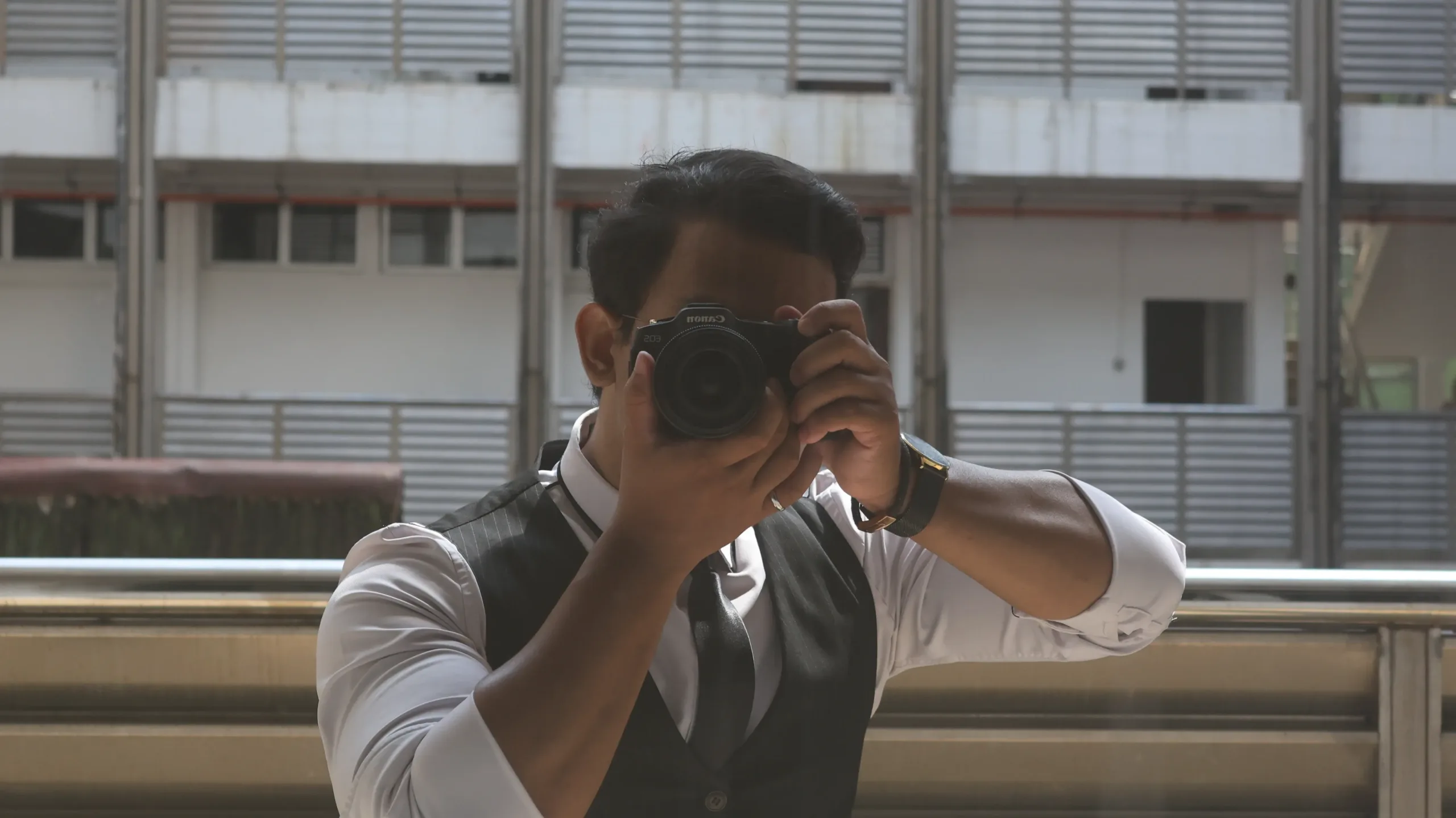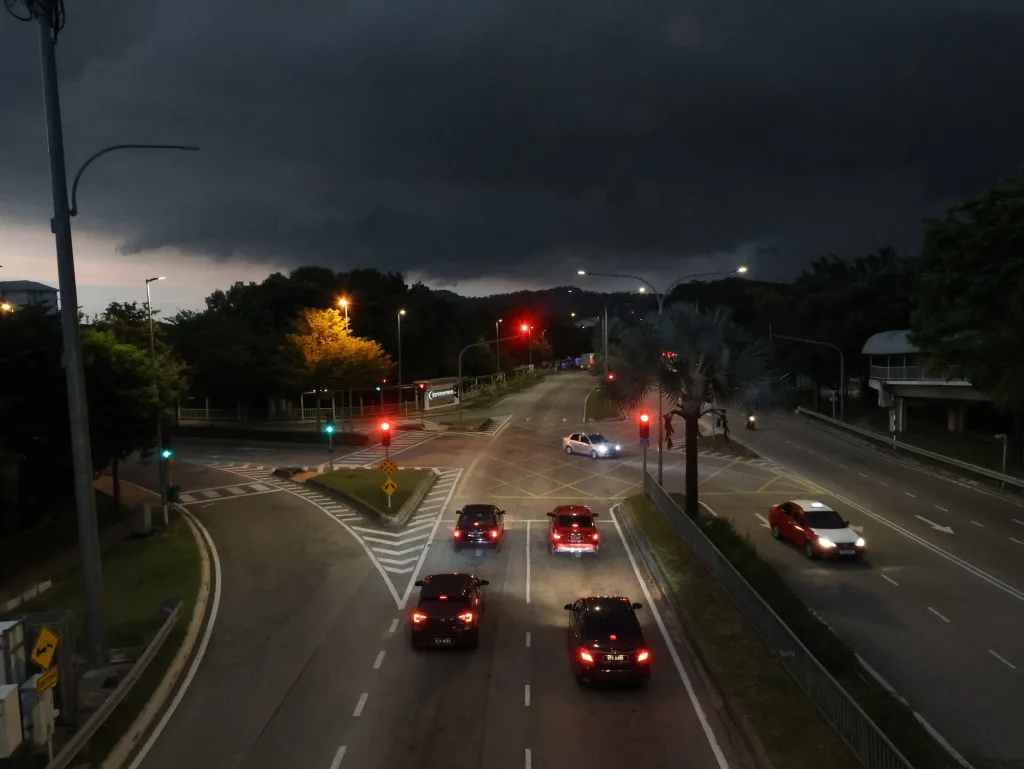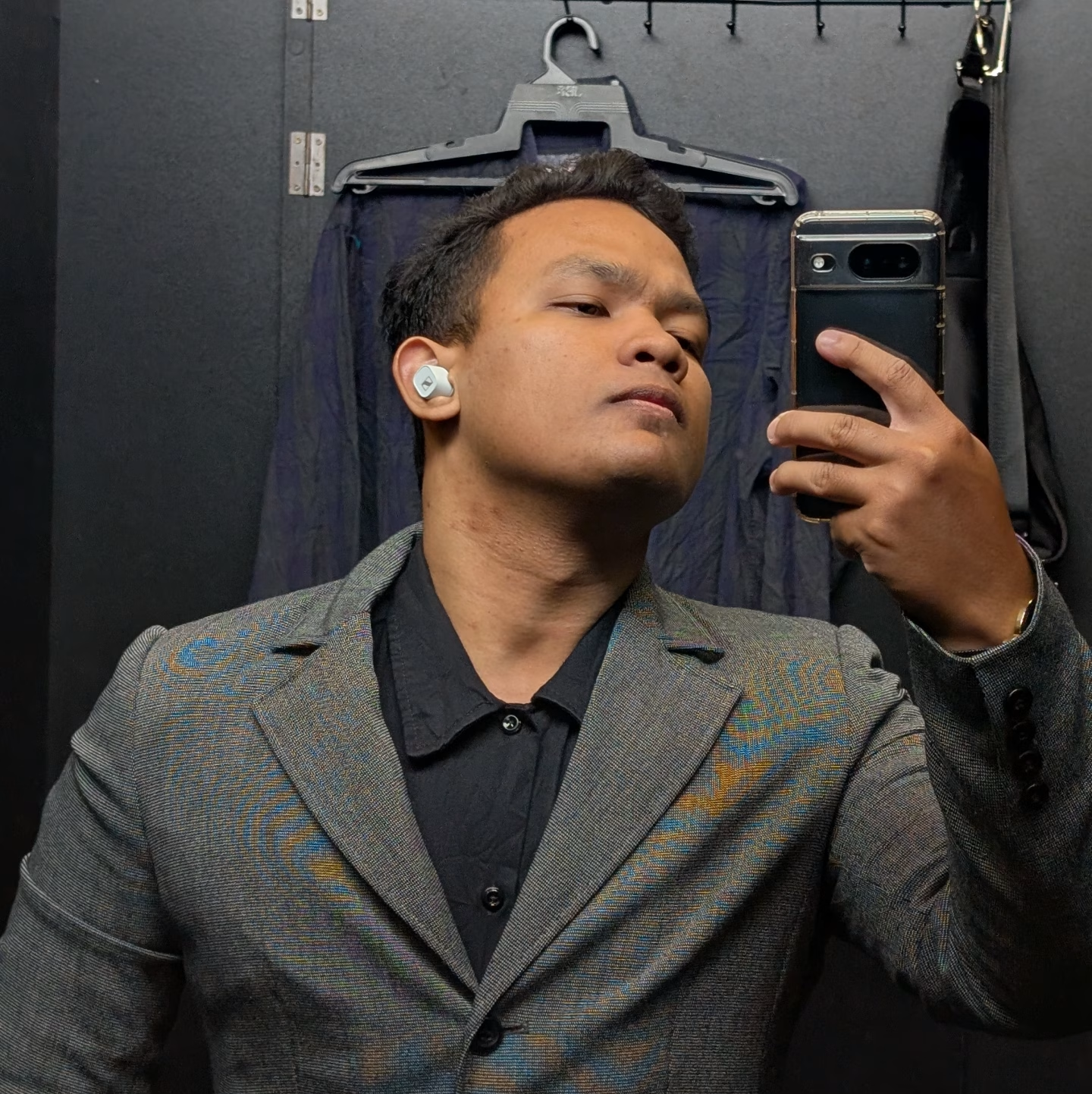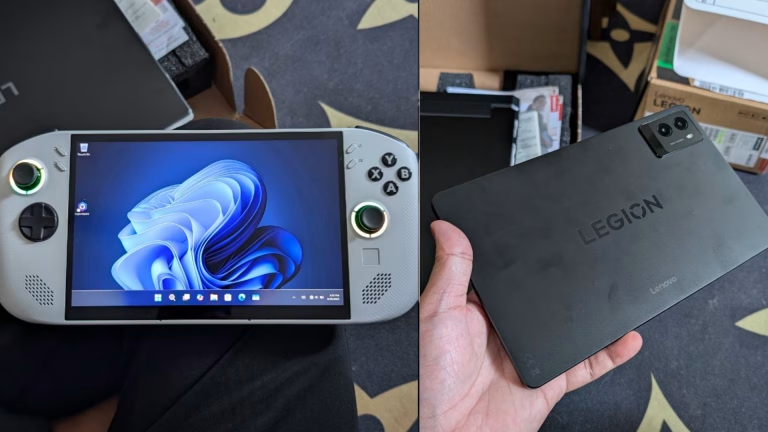
Canon EOS R8 is practically the full-frame mirrorless camera that one would wish to have, at least by photography enthusiast. If you’ve read my article on Canon EOS R50 about a couple of months ago, you’d find that I gave the camera a little too much credit. But I can’t deny that the camera was really good.
But now that I’m holding R8 in my hand, and after a couple of tinkering and fooling around, I can safely say that I’ve found my new favourite. Canon EOS R8 is a full-fledged mirrorless camera in comparison to the EOS R50 (which utilises APS-C sensor), and the camera is far more capable than the R50 I used, albeit a bit pricier.
Regardless, this camera is honestly doing justice to a lot of photos and videos I took, and I do want to highlight some of its features. Note that while the photos of the camera itself are taken with my phone, the rest of the photos you see are taken with Canon EOS R8. You be the judge.
Canon EOS R8 Specifications

Here are the full details of the camera’s specification should you prefer comparing this camera to the others:
| AF Modes | One-Shot AF, AI Focus AF (stills), Servo AF / Movie Servo AF |
| AF Point Selection | Spot AF, 1-point AF, Expand AF area (above/below/left/right or around), Flexible Zone AF 1 / 2 / 3, Whole area AF |
| AF System Points | Max. 1053 AF frame zones (Stills/Movies) |
| Built-in Flash | – |
| Closest Focusing Distance (cm) | – |
| Continuous Shooting Speed (Shots Per Sec) (Up To) | Electronic 1st curtain: 6* Electronic shutter: 40 *If flicker is detected, continuous shooting will slow down even when anti-flicker shooting is turned off. |
| Digital Zoom | Digital Tele-converter x2.0 & x4.0 |
| Dimensions (Excl. Protrusions) (mm) (Approx.) | 132.5 × 86.1 × 70.0 |
| Drive System | – |
| Effective ISO | Stills: 100–102,400 (L:50 / H:204,800) Movie: 100–25,600 (H:102,400) Canon Log movies: ISO 800–25,600 (L:100-640, H:32,000 – 102,400) HDR PQ movies: ISO 100–25,600* *HDR mode [Moving sub] requires min speed of ISO 800 |
| Effective Pixels (Megapixels) | 24.2 |
| Exposure Compensation | ±3 stops in 1/3-stop or 1/2-stop increments AEB: ±3 stops in 1/3-stop or 1/2-stop increments |
| Eye Detection AF | Yes (Auto / Left-eye Priority / Right-eye Priority) |
| Flash Modes | – |
| Focal Length (35mm Equivalent) | – |
| Guide Number ISO 100 metres | – |
| Image Resolution | 6000×4000 (JPEG L/RAW/C-RAW/HEIF) 3984×2656 (HEIF, JPEG M) 2976×1984 (HEIF, JPEG S1) 2400×1600 (HEIF, JPEG S2) |
| In-body Image Stabilizer (sensor shift IS) | No |
| LCD Monitor (Size) (Inch) | 3.0 |
| LCD Monitor Resolutions (dots) | 1.62 million |
| Manual Focus | Yes |
| Memory Card Type | Single Card Slots (SD, SDHC*, SDXC*) *UHS-II cards supported |
| Metering Mode | Stills: Evaluative, Partial, Spot, Centre-weighted average Movie: Evaluative (when faces are detected), Centre-weighted average (when no faces are detected/When set to Canon Log 3) |
| Movie Digital IS | Yes |
| Movie Format | MP4 |
| Optical Image Stabilizer | No |
| Optical Zoom | – |
| Optional Power | AC Power (AC Adapter AC-E6N and DC Coupler DR-E18) USB Power (PD-E1) |
| Peripheral Connections | USB Type-C (SuperSpeed Plus USB (USB 3.2 Gen 2) equivalent) External microphone IN Headphone terminal HDMI micro (Type D) Remote control terminal (E3) Multi-function Shoe |
| Processor Type | DIGIC X |
| Sensor Size | Full-frame CMOS |
| Shooting Modes | Stills : A+/Hybrid Auto/Special scene mode/Creative filters/Fv/P/Tv/Av/M/B/C1/C2 Movies : A+/Special scene mode (HDR movie)/Creative filters/P/Tv/Av/M/C1/C2 |
| Shutter Speed Range (Sec.) | Stills: Electronic 1st-curtain: 30 – 1/4000, Electronic shutter: 30 – 1/16000, 30 – 1/8000 (High-speed continuous shooting +) Movie recording: Auto exposure: 1/25* – 1/8000, Shutter-priority/Manual exposure: 1/8* – 1/8000 *Varies by shooting mode and frame rate |
| Silent Shutter | Yes |
| Standard Power Supply | LP-E17 |
| Still Image Format | JPEG, HEIF, RAW, C-RAW |
| Viewfinder Coverage (Approx.) | 100% |
| Viewfinder Type | 0.39-inch OLED, approx. 2.36million dots 59.94/119.88 fps Refresh Rate |
| Weight (g) (Including the battery and memory card) (Approx.) *For camera kits, weight includes kit lens(es). | 461 |
| White Balance | Auto (Ambience priority/White priority), Daylight, Shade, Cloudy (Effective in twilight and sunset), Tungsten light, White fluorescent light, Flash*, Custom, Color temperature setting (approx. 2500–10000 K) Shoot to set white balance (Live View), White balance shift and white balance bracketing features available *Flash color temperature information transmission possible (EX / EL Series Speedlite) |
| X-sync (sec.) | Electronic 1st curtain: 1/200 |
Weighing 461 grams (almost twice the weight of two iPhone 15 Pro Max), Canon EOS R8 is definitely one of the cameras you would find delightful to hold, albeit a bit too light for some with larger hands. If you have small palms like me, I would say that the camera is just a bit big for one hand to hold it securely. The grip on the right side of the camera is there, but I wouldn’t recommend just fling your hand around, because it is not grease-friendly, especially when your palms tend to get sweaty.
I recommend getting a camera strap together with the kit. You never know when it’s your not-so lucky day. Happens to my phone once.
Quick Highlight: Canon EOS R8’s Autofocus Feature

I want to highlight Canon EOS R8’s autofocus capability. I tested R50 before, and this one is no exception when it comes to autofocus (if not better); the camera picks up just about anything easily.
You can set the camera to focus only people, objects, or both. Even as you move the camera around a lot, the camera has no problems with object detection in real-time, so you won’t be seeing blurred out footage or shots.

I notice the autofocus feature when taking pictures of moving objects (animals, cars, people, etc.). The subjects in every one of the photos I took look amazingly crisp, without the worry for the faces or some parts of the subjects blurred out because they were moving.
The camera, as the technical specifications show, has 40 frames per second burst shots. That may explain the crisp images, apart from the autofocus capability this camera offers.

Landscape Shots with Canon EOS R8
As far as I’m concerned, I am satisfied with the landscape shots I’ve taken with this camera. The colours are just nice; they don’t pop out too much as some image processors do, and they don’t look exactly dull either.

Given enough sunlight, or under sufficient lighting, this camera performs extremely well. I believe it’s because of the 24-megapixel sensor that delivers sharp and detailed images. So, it’s perfect for capturing the intricate details of a landscape.
It’s very much life-like is what I’m trying to say.

The camera offers a wide dynamic range too, but I believe a bit of adjustments would be needed if you know how to use manual shooting mode. The picture above was taken at dusk, when the sun was coming down. The sky in the picture says otherwise. If you look at the building, there’s a hint of orange tint near the top that shows it was dusk.

Only when there isn’t an extreme contrast between highlight and shadow does the picture come out well. The picture here does the sky some justice; it looks a lot better and complements the entire picture overall.
But overall, the picture taken would be just perfect for your everyday shoot. The building photo I took below is also a good example of another good landscape shot.


Portrait Shots


Of course, portrait shots stand out really well with this camera. With wide apertures and 24.2-megapixel sensor this camera has, the image produced for portrait shots comes out really sharp and high-quality.
The EOS R8 boasts Canon’s Dual Pixel CMOS AF II system — a system found in EOS R models. Canon EOS R8 is meant for non-camera users to do vlogging. This means taking quick shots of them or the surrounding without having the hassle of doing the set up prior.
In other words, this camera is capable of taking sharp and focused portraits even with fast-moving subjects or when using shallow depth of field.

If you plan on taking a lot of portrait shots with this camera, I can safely say you will be well-satisfied. The produced images are really sharp for those special occasions that you want to post on social media, or just for content-creating purposes.

But, do bear in mind that the camera does not offer IBIS (in-body image stabilisation). This can be a minor drawback when using slower shutter speeds for creative effects like bokeh or low-light portraits.
You might also experience jello effect when trying to record videos, particularly when shooting with the electronic shutter. Of course, higher-end cameras often address this issue, but for this camera, it can happen (especially under low-light conditions).
I would recommend a gimbal or a tripod to go with the camera if you happen to record a lot of videos with low-light conditions, and stick with mechanical shutter if possible. Otherwise, sufficient lighting would do decently if you want to take that good portrait shots of yourself and/or your friends.
Close-up Shots

There’s not much justice the lens could do with close-up shots that I took. The camera comes with a standard RF 24-50mm f/4.5-6.3 IS STM lens, so I couldn’t get any closer without losing focus on the subject.
But it does just enough. Just like Canon EOS R50 I used before, the normal close-up shots would mean that you can get reasonably close to the subject. But it’s not a dedicated macro lens. True macro lenses offer much closer focusing distances and a higher magnification ratio (usually 1:1) that allow for capturing extreme close-ups with incredible detail.
But since the camera is equipped with 24-megapixel sensors, the EOS R8 still delivers good image quality nevertheless, which translates to sharp and detailed close-up photos.

Harsh Lighting Conditions

This is where I test the camera’s capabilities in its dynamic range. I took some photos in both extreme dark and bright areas to see if the pictures come out well without adjustments on my end.
While the camera’s dynamic range is impressive, it can still be challenged in very high-contrast situations. Under extreme sunlight, the darkened area of the tree (shadow) is compromised to compensate for the bright area of the sky. Even then, the direct light from the sun itself caused the sky to lose its colour, too.

But if you don’t direct the camera directly at the sun, the camera does decently well. The photo above was taken under extreme heat, so everything tends to look vivid.
Compared to APS-C sensors, the full-frame sensor captures more light per area, so the camera allows me to use higher ISO settings without excessive noise in bright conditions. It’s useful for situations where I need a fast shutter speed to freeze action or avoid camera shake, such as shooting street photography in bright sunlight.

The colours pop just nicely, even under extremely bright lighting. So you don’t have to worry about having to adjust the ISO (unless you want specific settings for highlights and shadows of your photos) when you take this camera for a walk in the evening.

And then we have low-light conditions, which puts the camera’s capabilities in capturing dimly lit areas to the test. As far as I’m using the camera, it doesn’t really hold up *that* well, at least not without excessive noise present.

It’s nothing majestic, but it’s doing okay. It reminds me of EOS R50, but it performs slightly better. I wouldn’t be going out at night bringing this camera for a photoshoot session, though; the noises present in the pictures in low-light conditions won’t do much justice to the pictures.

The camera tended to favour a conservative exposure to avoid blown-out highlights and result in slightly underexposed images. For photographers comfortable with RAW capture and post-processing in Lightroom, I think these images can probably be easily recovered and optimised.
This highlights the camera’s strength in prioritising highlight detail, which is crucial in scenes with high contrast. If you’re like me who prefer in-camera JPEG processing for a faster workflow, I suppose there might be room for improvement in automatic exposure adjustments in extreme lighting.

My Take on Canon EOS R8

For all that it’s worth, I just find this camera to be genuinely pleasing to have nevertheless. It struggles in some areas, yes, but for casual photography, this camera definitely does it well.
Besides, you’re paying for a lot of features offered on this camera, too, including the flippable viewfinder screen, aux in-and-out port for microphone/earphone, accessory ports e.g., camera flash, USB-C port for media transfer and live webcam, and also Wi-fi media transfer and wireless remote shutter.

Regardless, if you’re planning to buy this camera, then by all means go for it. It might just be the camera you’ll hold dear for years to come.
If you want to read about the previous article I wrote about Canon EOS R50, feel free to read it here. Otherwise, I have a whole catalogue for you to read. As always, until next time!







